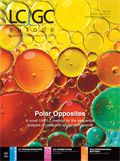The International Symposium on GPC/SEC and Related Techniques
The International Symposium on GPC/SEC and Related Techniques will be held at the Novotel in Amsterdam, Netherlands from 27–29 September 2016.
Photo Credit: Andrey Danilovich/Getty Images

The International Symposium on GPC/SEC and Related Techniques will be held at the Novotel in Amsterdam, Netherlands from 27–29 September 2016.
The International Symposium on GPC/SEC and Related Techniques returns to Europe following a highly successful conference in Philadelphia, USA, in October 2015. This unique event focuses on bringing together the three key elements of instrumentation: innovation, industrial research, and academia. Through a series of scientific presentations and open forum discussions, led by some of the most renowned experts in this field, attendees are immediately immersed into open debate regarding the most important and current analytical challenges facing the polymer characterization industry.
The Symposium has its roots in the early stages of GPC/SEC adoption, the first Symposia being organized by Waters Associates in the early 1960s. Today, the ever increasing complexity of high performance materials, coupled with the introduction of a vast array of modern analytical tools, encouraged Waters Corporation and Polymer Standards Services GmbH to bring this Symposium back to the annual conference calendar.
Day one of the Symposium will consist of an expert day designed to introduce the delegates to the conference’s panel of experts, whose primary role is to facilitate the workshop sessions on the following two days. Each expert will be allotted a 45-min presentation slot to discuss their most active area of research. The industry experts who will be bringing their broad spectrum of knowledge and wisdom this year are:
• Dr Jana Falkenhagen (BAM, Berlin Germany) - Multi-Dimensional Techniques with a Focus on LC–MALDI/ESI-TOF-MS
• Dr Elena Uliyanchenko (Sabic, Netherlands) - Comprehensive 2D LC/UHPSEC
• Dr Harry Philipson (DSM Resolve, Netherlands) - State of the Art of Size and Interaction Based Separations for Industrial Polymers
• Prof Taihyun Chang (Pohang Uni of Science and Technology, South Korea) - HPLC Characterization of Polymers
• Dr Miroslav Janco (Dow-Dupont, USA) - GPC/SEC using Advanced Detectors
Day two of the Symposium will focus on separations, commencing with a plenary lecture from Dr Bastiaan Staal (BASF, Ludwigshafen, Germany) on The Comeback of 2D Chromatography in the Characterization of Industrial Polymers.
This will be followed by workshop sessions on:
• GPC/SEC Potential and Limitations
• Related Techniques (LAC/FFF/SFC etc)
• The Vendors Perspective on Analytical Challenges.
Each workshop session will comprise of four short invited talks followed by a oneâhour open facilitated discussion.
Day three will follow the same format as day two and will focus on detectors, commencing with a plenary lecture from Dr Andre Striegel (NIST, USA) entitled How Can Multidetector SEC Inform our Knowledge of Mechanical Polymer Degradation? This talk will be followed by workshop sessions on:
• GPC/SEC with MS/NMR/FTIR Detection
• GPC/SEC with Viscometry and MALLS.
Scientists and researchers are invited to submit poster and oral abstracts that will be reviewed by the experts and selected on merit for inclusion within the programme. The abstract submission deadline is 31 May 2016.
A new addition to the programme for 2016 is an optional pre-symposium educational workshop. On Monday an introduction to the theory behind the key topics will be given so that attendees can fully profit from the expert presentations and the conference sessions on the following days.
E-mail:joy_longa@waters.com • Website:www.gpcevent.com

















Determining Neurotransmitters in Spinal Cords with UHPLC
February 18th 2025Researchers at Jilin University (Changchun, China) developed a highly sensitive, rapid, and accurate method for analyzing neurotransmitters (NTs) in rat spinal cord tissue. Ultra-high performance liquid chromatography-triple quadrupole tandem mass spectrometry (UHPLC-QqQ-MS/MS) in conjunction with ultra-ionic liquid dispersive liquid-liquid microextraction (UA-MIL-DLLME) were used to extract NTs for analysis.
The Next Frontier for Mass Spectrometry: Maximizing Ion Utilization
January 20th 2025In this podcast, Daniel DeBord, CTO of MOBILion Systems, describes a new high resolution mass spectrometry approach that promises to increase speed and sensitivity in omics applications. MOBILion recently introduced the PAMAF mode of operation, which stands for parallel accumulation with mobility aligned fragmentation. It substantially increases the fraction of ions used for mass spectrometry analysis by replacing the functionality of the quadrupole with high resolution ion mobility. Listen to learn more about this exciting new development.
Revolutionizing LC-MS with Next-Gen Separation for Cyclic Peptide Analysis
February 17th 2025Cyclic peptides, known for their stability and high specificity, are promising therapeutic agents in the fight against cancer, infections, and autoimmune diseases. However, developing effective cyclic peptides presents numerous challenges, including poor pharmacokinetics, efficacy, and toxicity. Traditional methods like liquid chromatography tandem-mass spectrometry (LC-MS/MS) often struggle with resolving isomeric linear peptide metabolites, posing significant risks in safety, efficacy, and regulatory approval. In this paper, Komal Kedia, PhD, will share how she leveraged MOBIE’s high-resolution ion mobility-mass spectrometry (IM-MS) system to achieve a 72% reduction in run times, 200% greater resolving power, and enhanced accuracy in identifying “soft spots” prone to enzymatic degradation.
Determining Neurotransmitters in Spinal Cords with UHPLC
February 18th 2025Researchers at Jilin University (Changchun, China) developed a highly sensitive, rapid, and accurate method for analyzing neurotransmitters (NTs) in rat spinal cord tissue. Ultra-high performance liquid chromatography-triple quadrupole tandem mass spectrometry (UHPLC-QqQ-MS/MS) in conjunction with ultra-ionic liquid dispersive liquid-liquid microextraction (UA-MIL-DLLME) were used to extract NTs for analysis.
The Next Frontier for Mass Spectrometry: Maximizing Ion Utilization
January 20th 2025In this podcast, Daniel DeBord, CTO of MOBILion Systems, describes a new high resolution mass spectrometry approach that promises to increase speed and sensitivity in omics applications. MOBILion recently introduced the PAMAF mode of operation, which stands for parallel accumulation with mobility aligned fragmentation. It substantially increases the fraction of ions used for mass spectrometry analysis by replacing the functionality of the quadrupole with high resolution ion mobility. Listen to learn more about this exciting new development.
Revolutionizing LC-MS with Next-Gen Separation for Cyclic Peptide Analysis
February 17th 2025Cyclic peptides, known for their stability and high specificity, are promising therapeutic agents in the fight against cancer, infections, and autoimmune diseases. However, developing effective cyclic peptides presents numerous challenges, including poor pharmacokinetics, efficacy, and toxicity. Traditional methods like liquid chromatography tandem-mass spectrometry (LC-MS/MS) often struggle with resolving isomeric linear peptide metabolites, posing significant risks in safety, efficacy, and regulatory approval. In this paper, Komal Kedia, PhD, will share how she leveraged MOBIE’s high-resolution ion mobility-mass spectrometry (IM-MS) system to achieve a 72% reduction in run times, 200% greater resolving power, and enhanced accuracy in identifying “soft spots” prone to enzymatic degradation.
